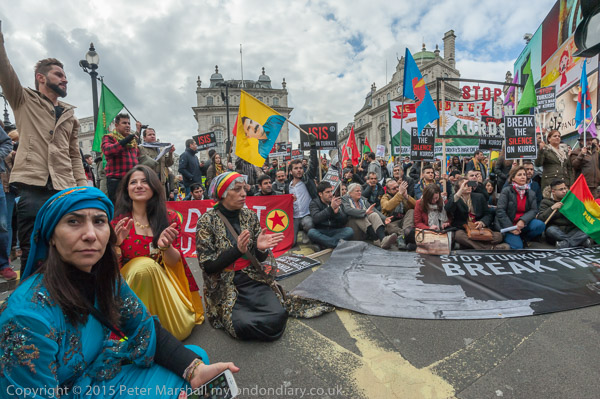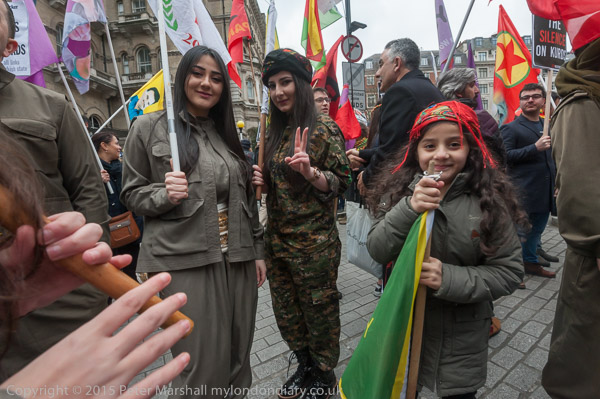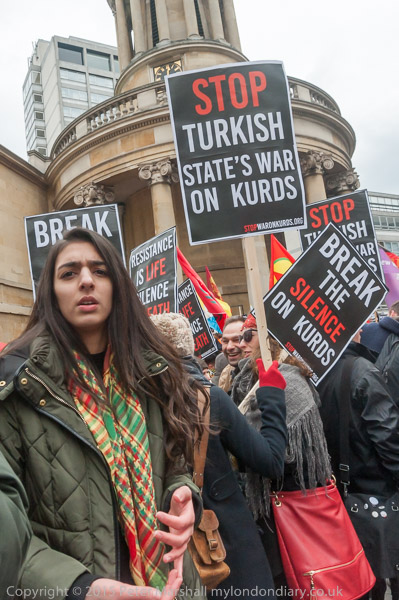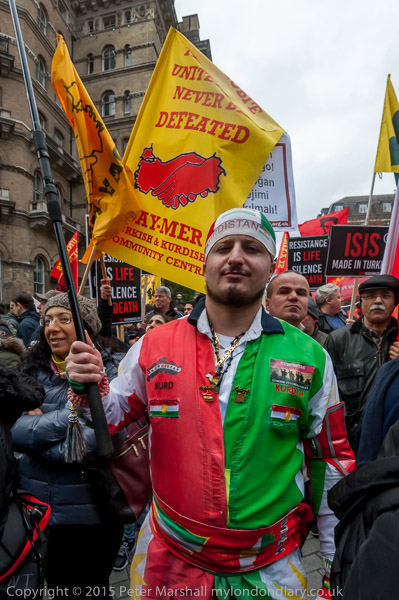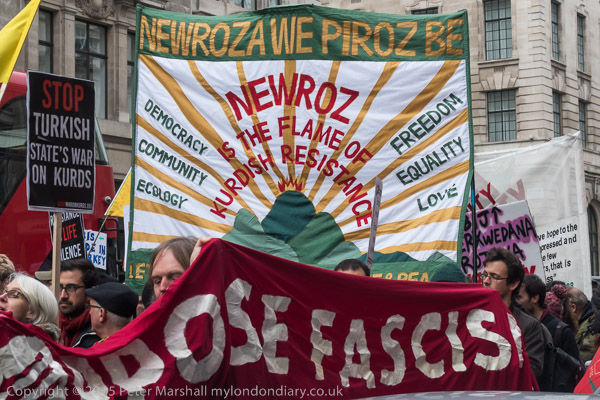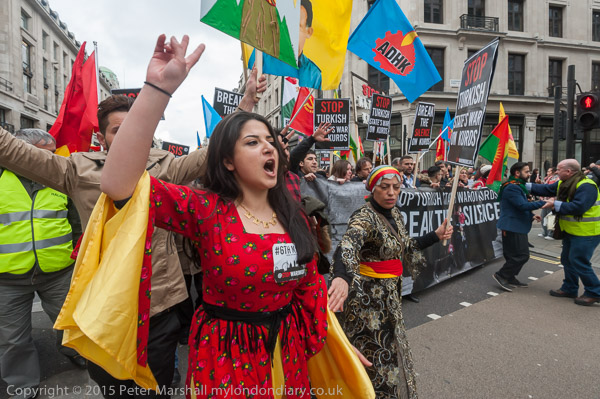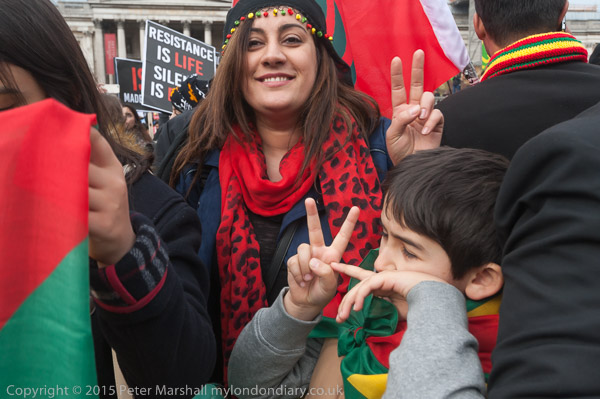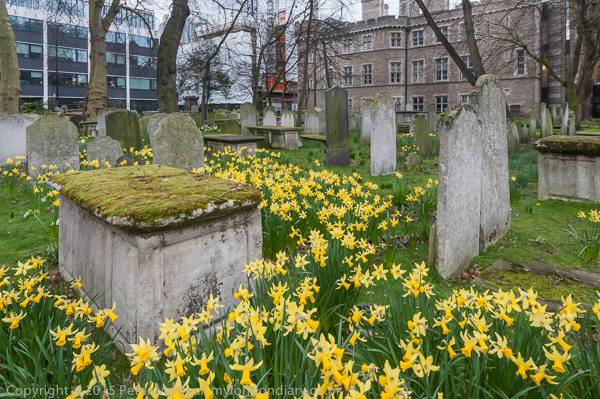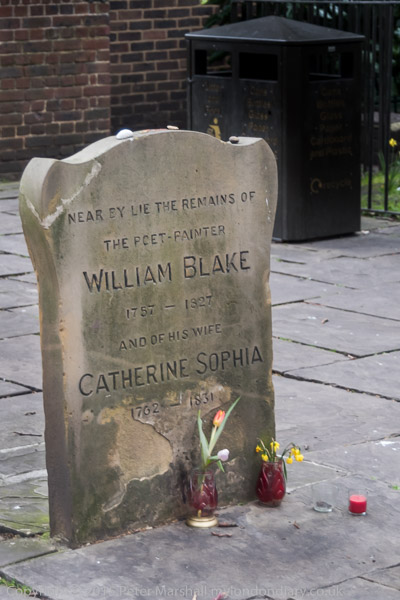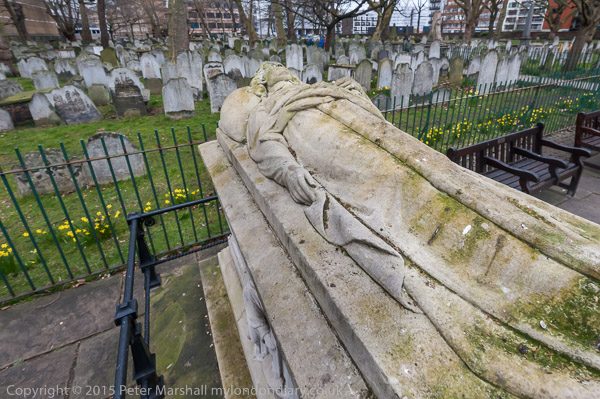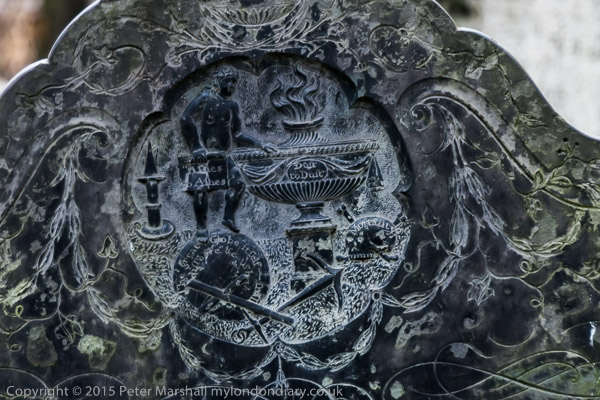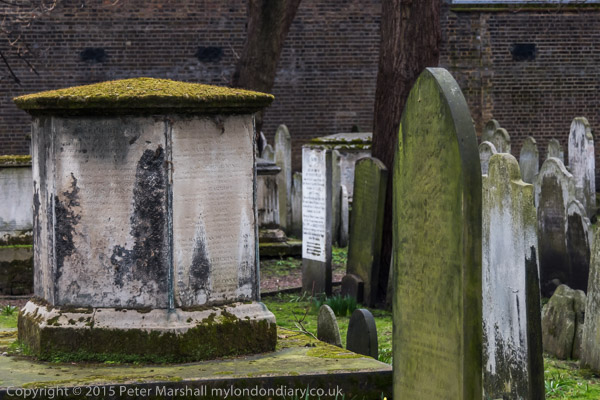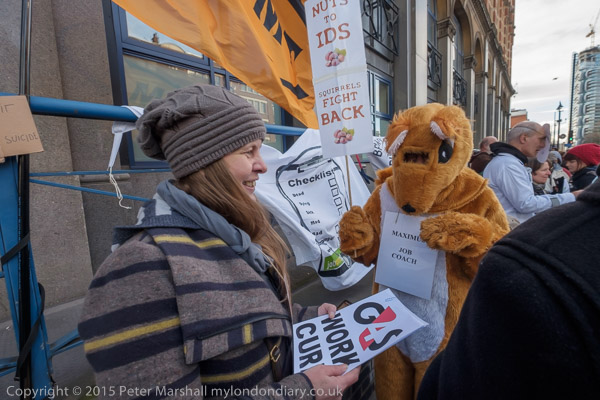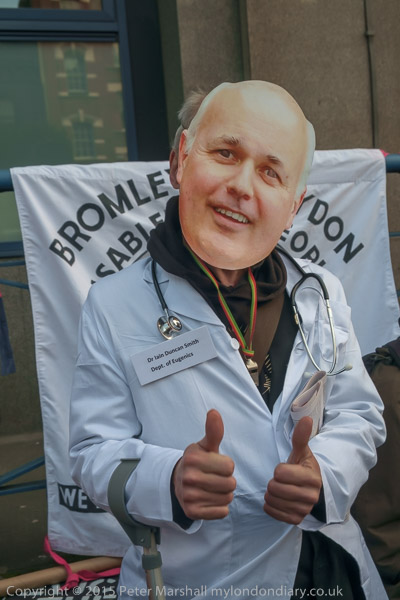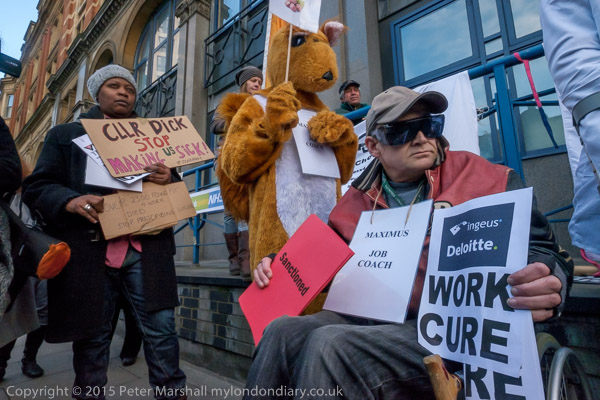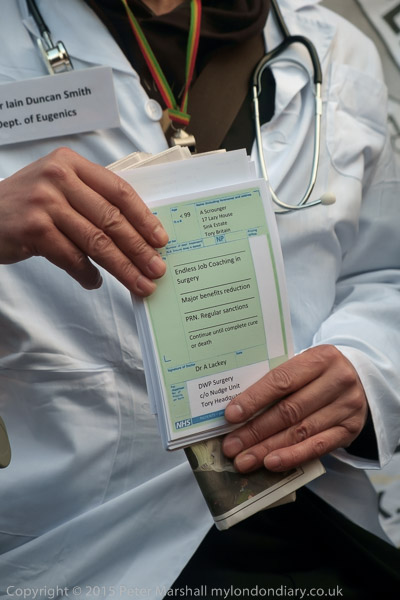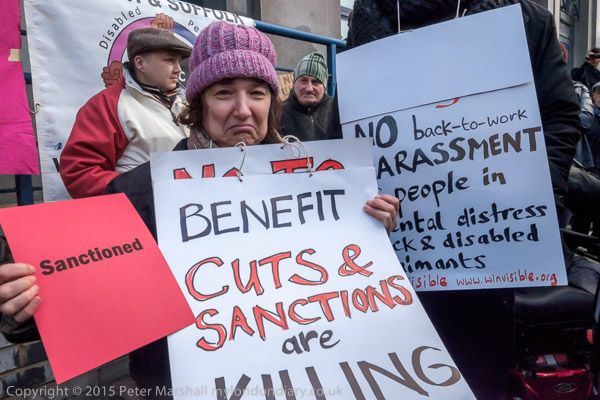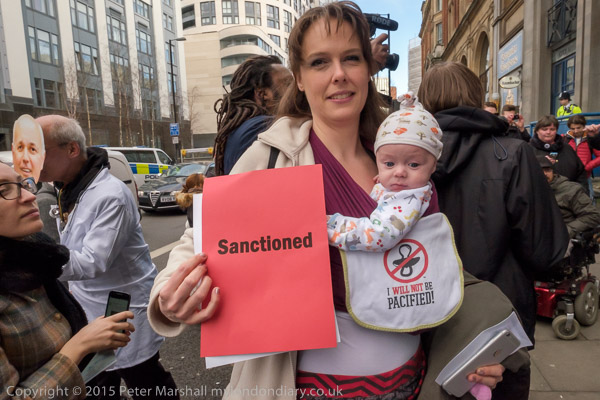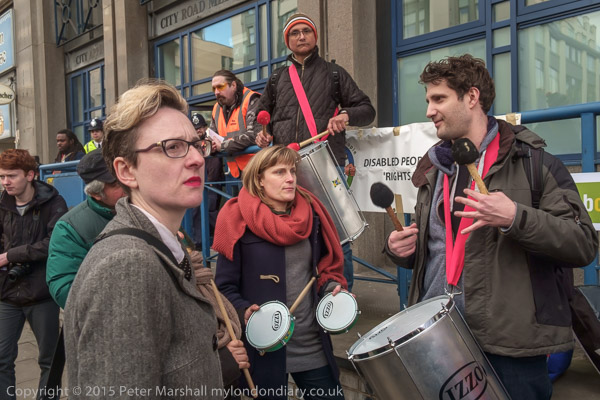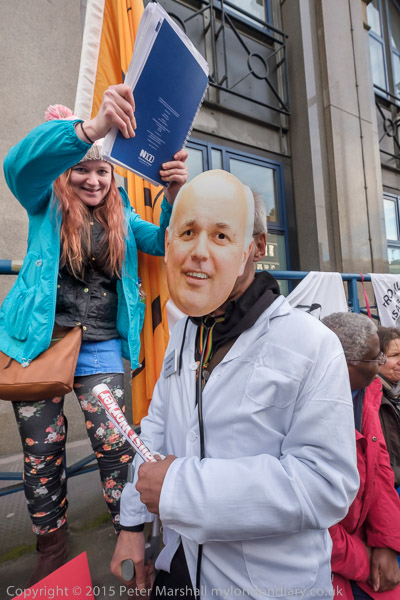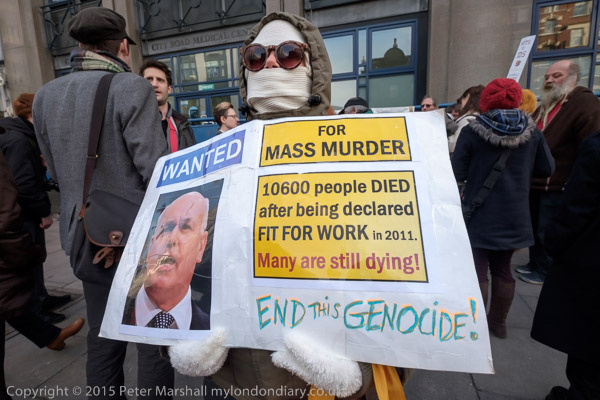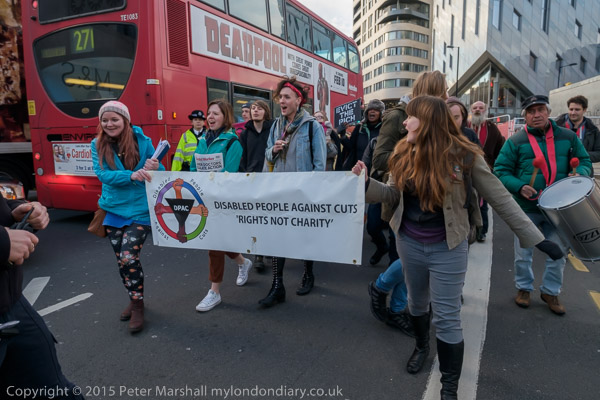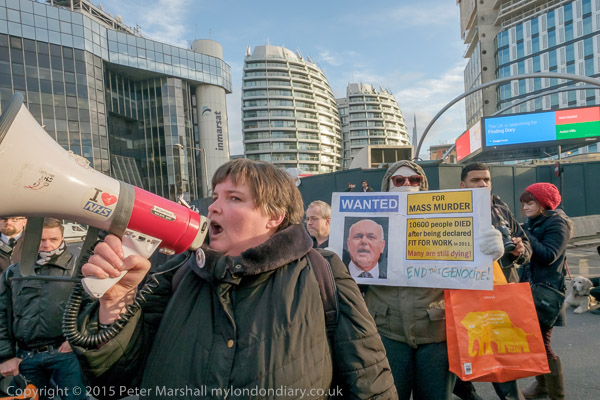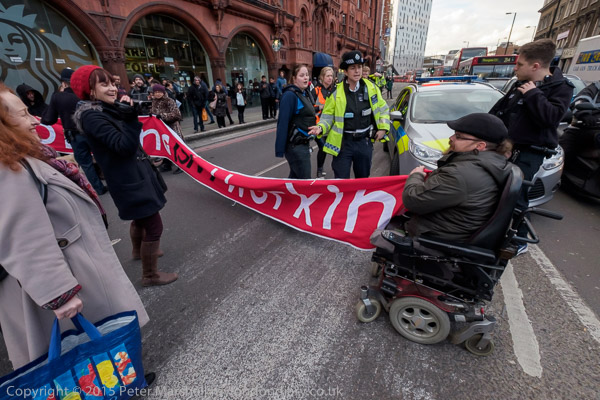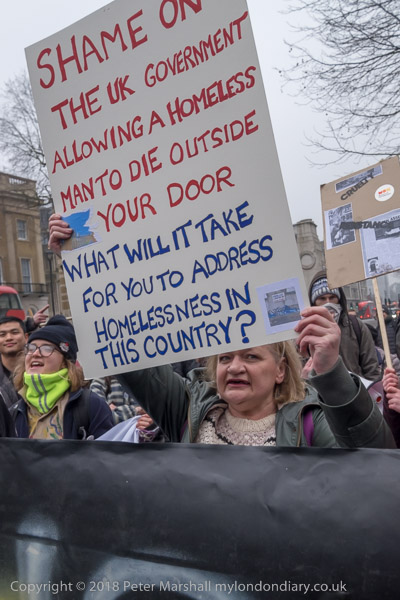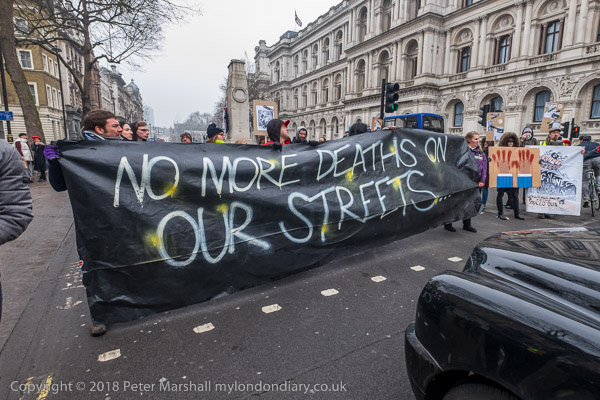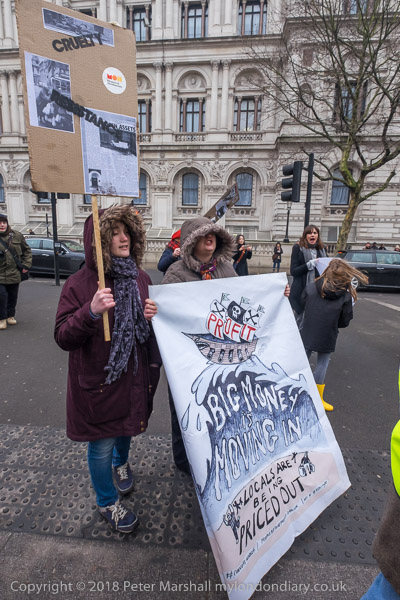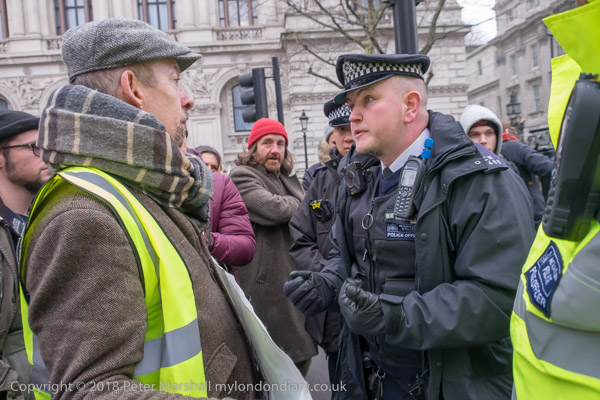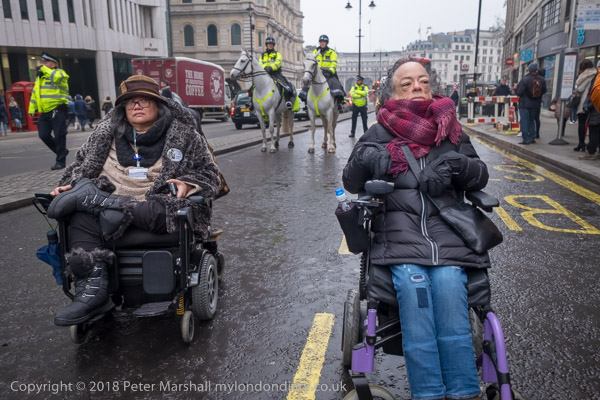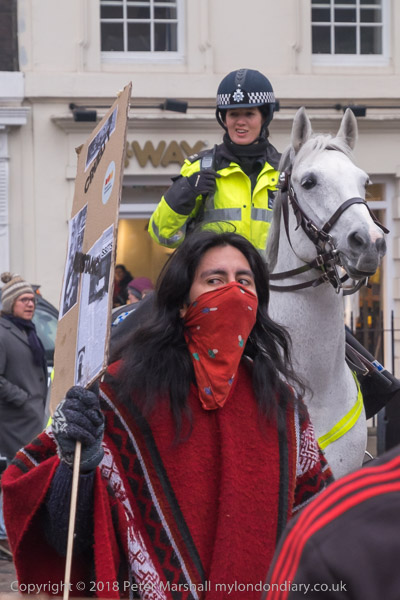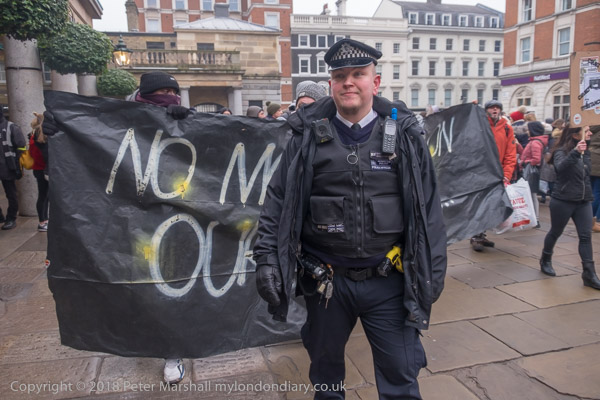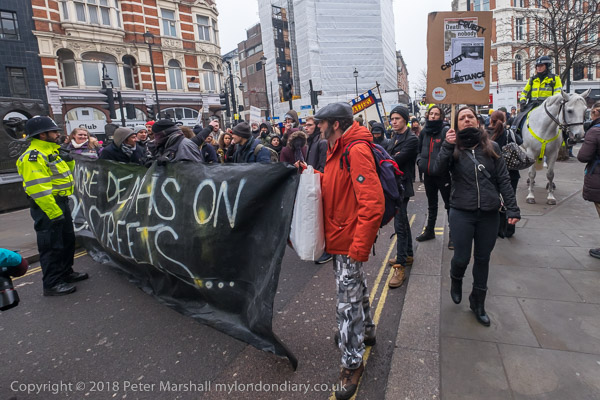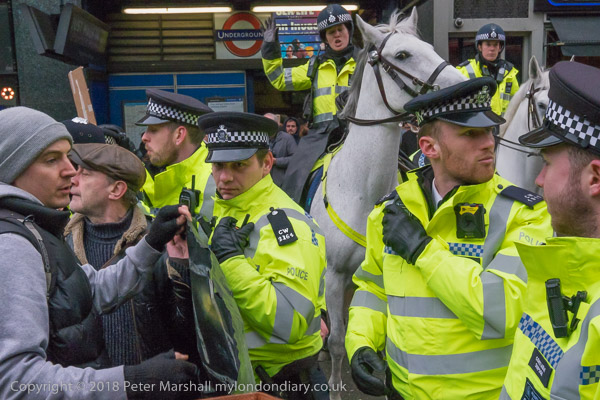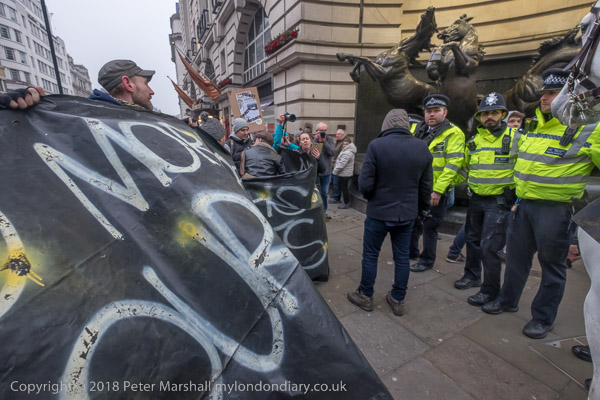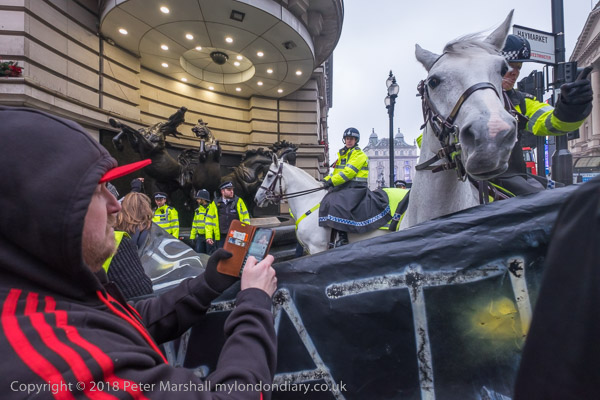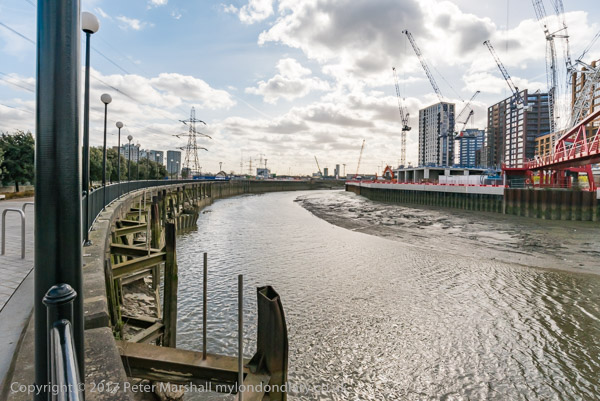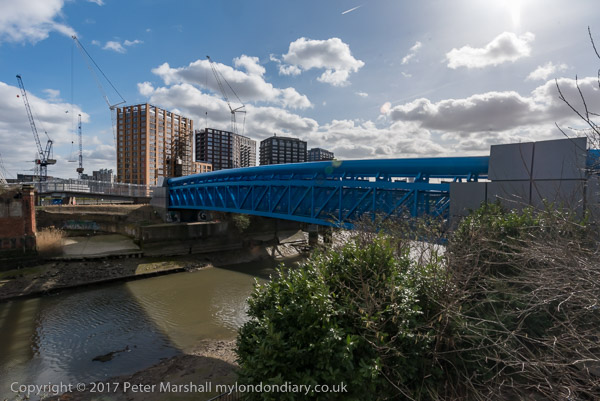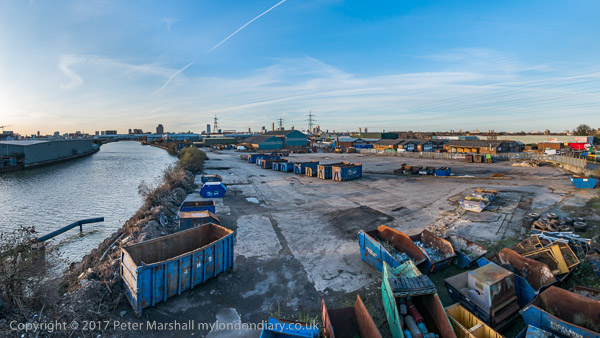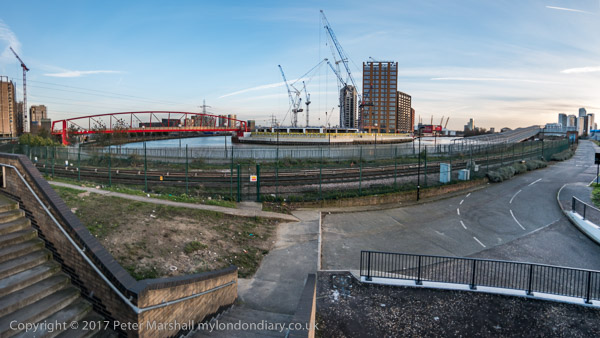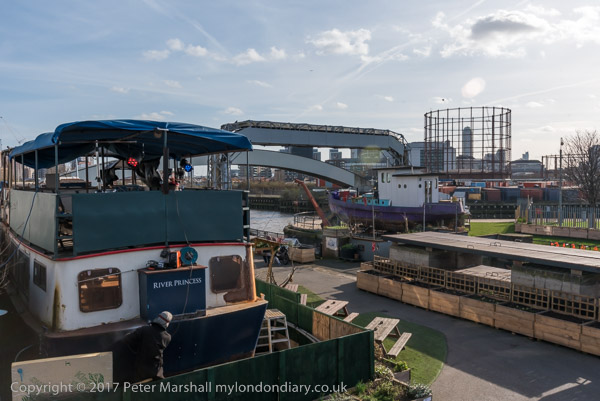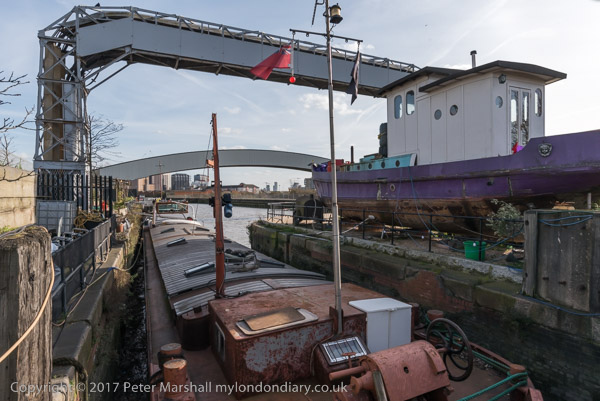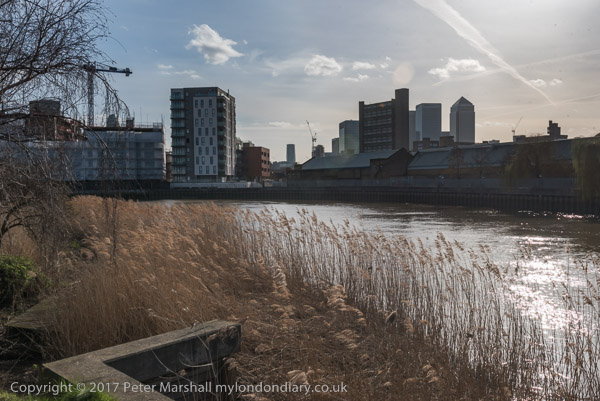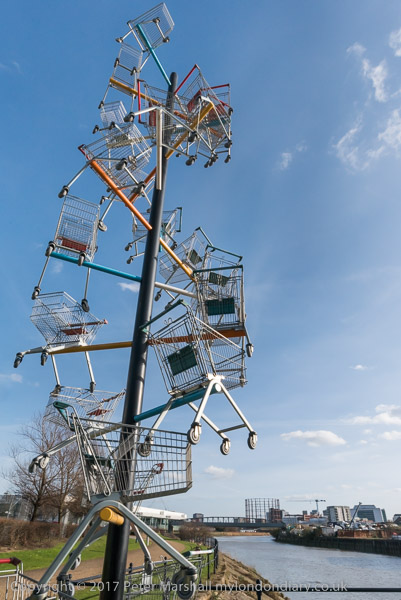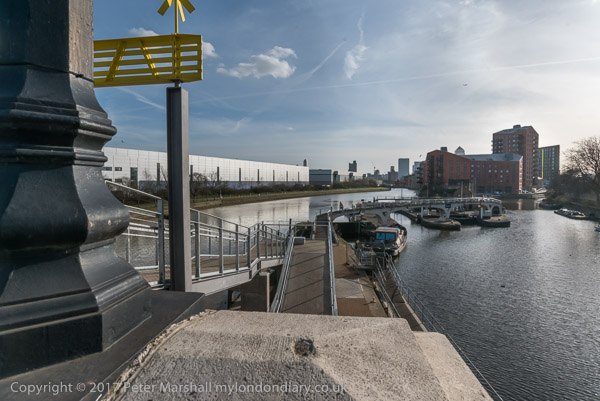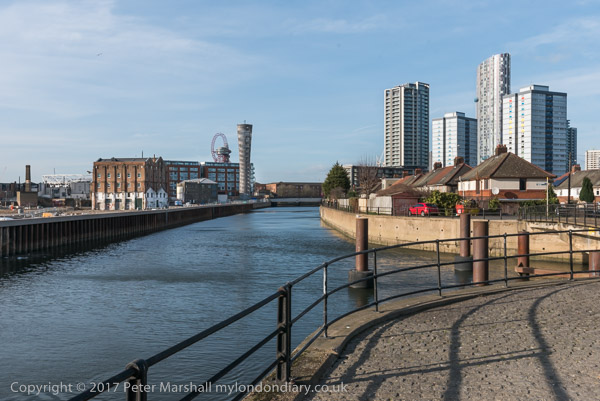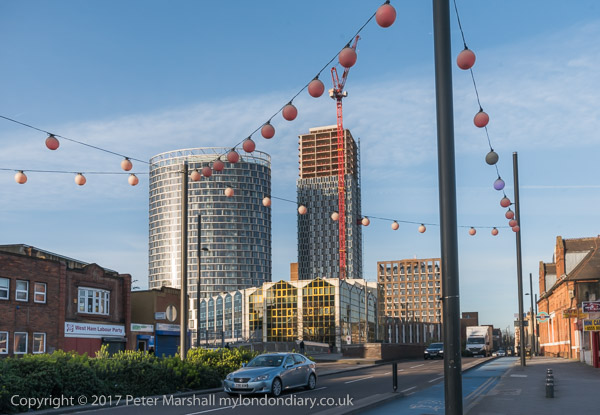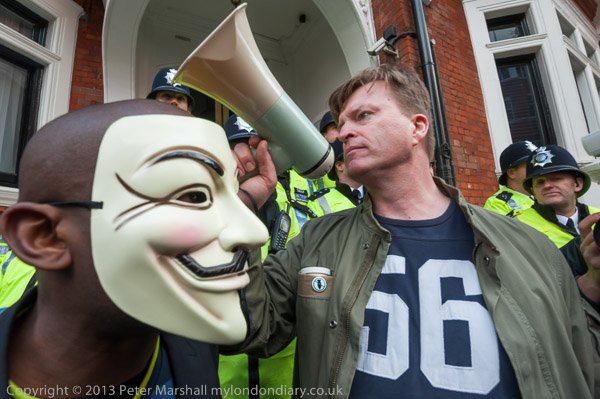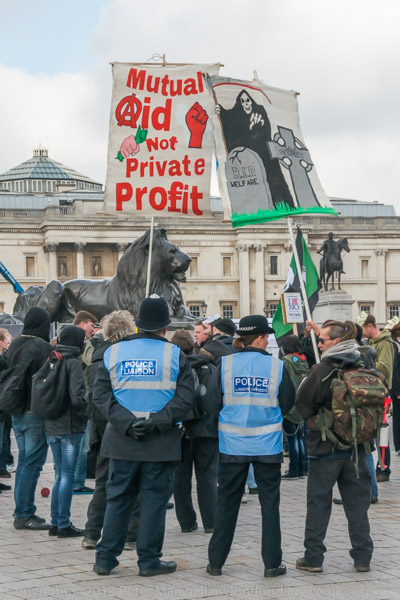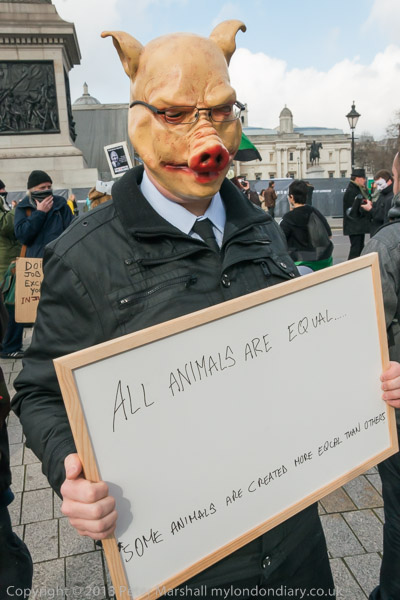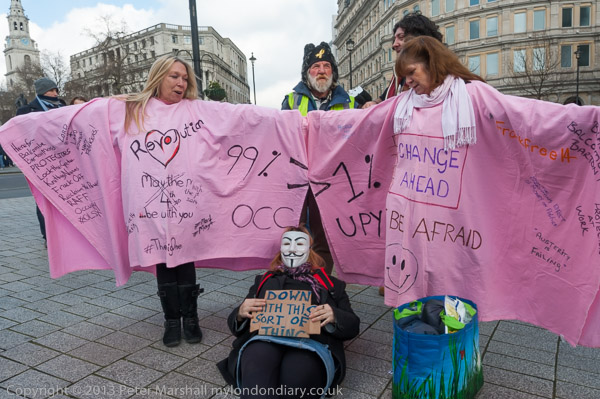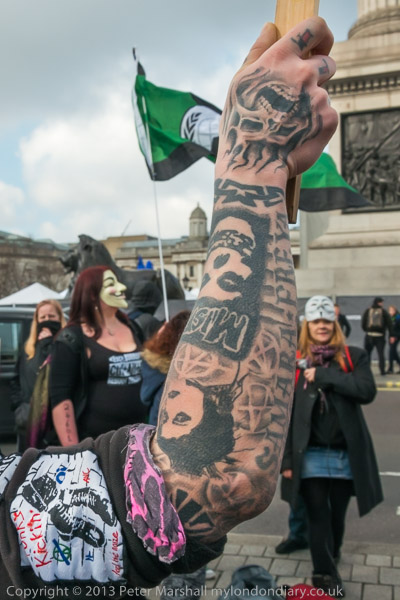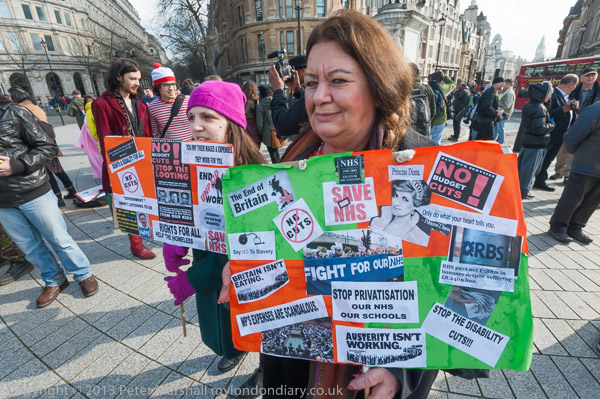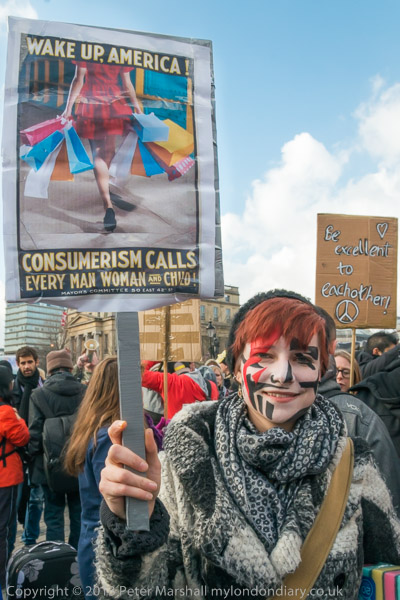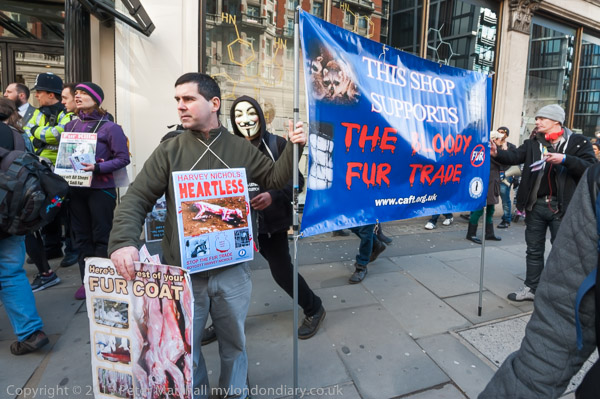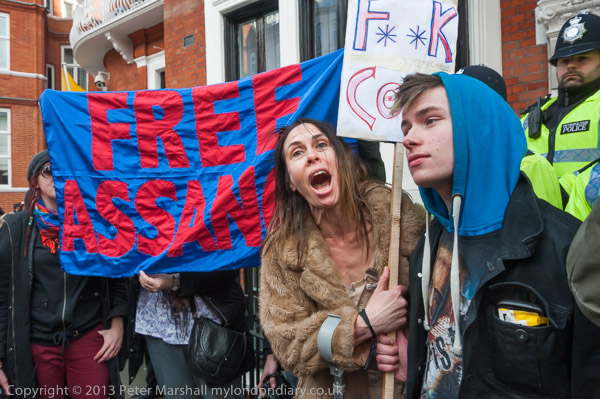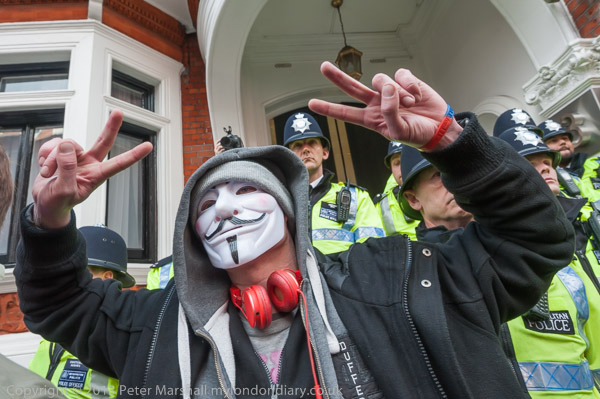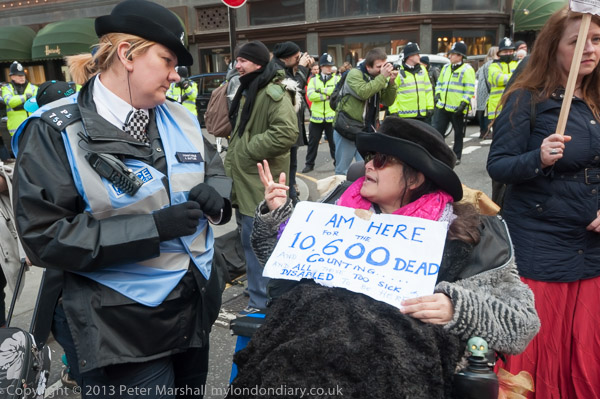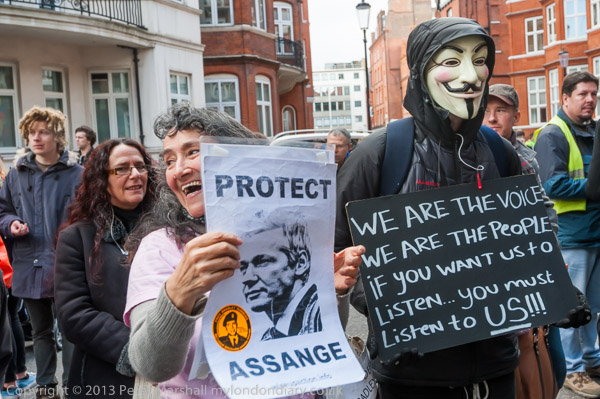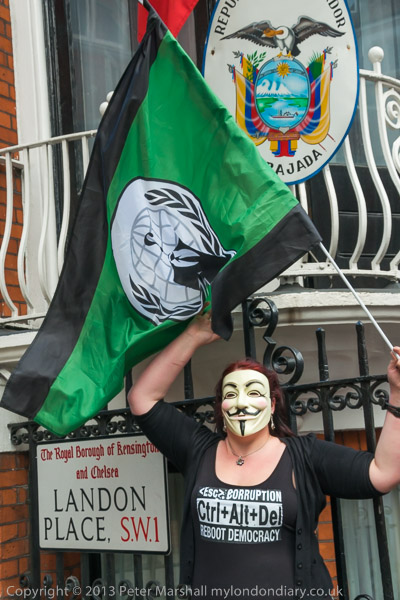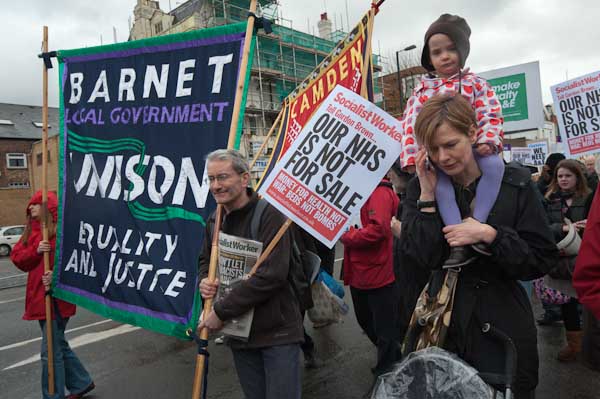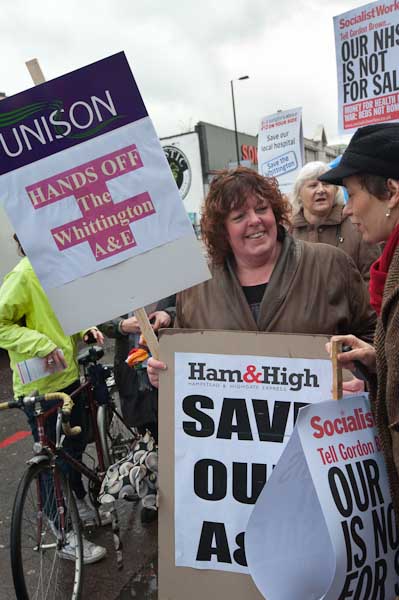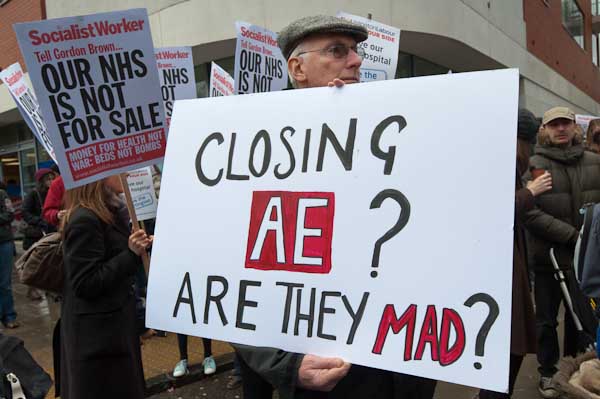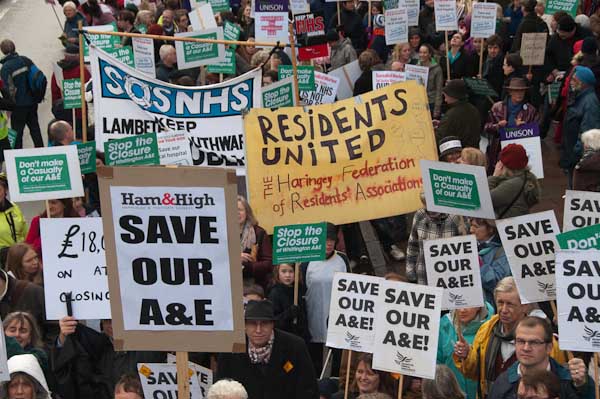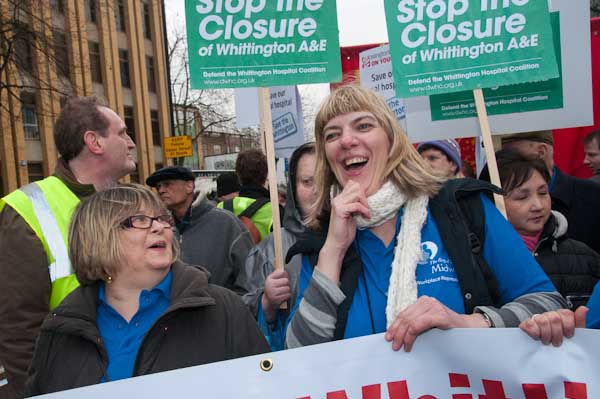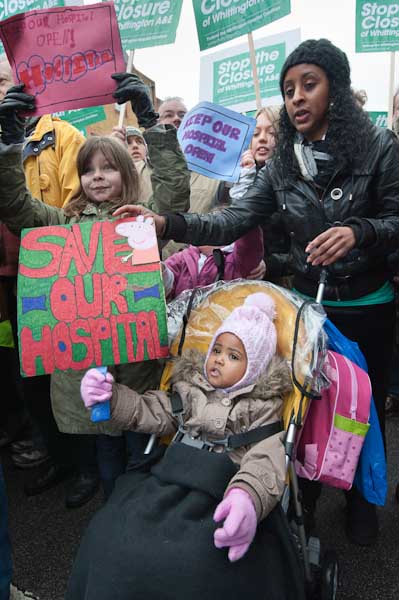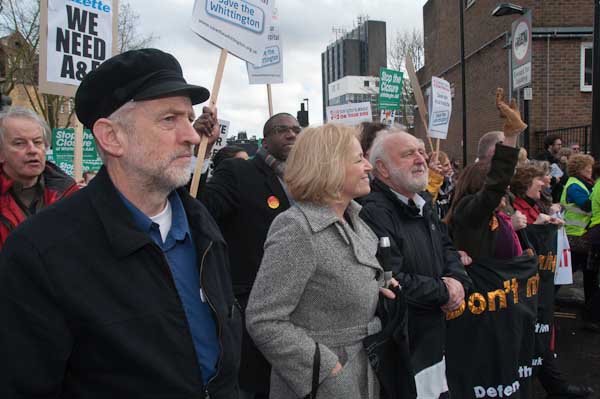March 8th – Women Strike And Protest. Last year on International Women’s Day I published a long post, International Women’s Day Marches with images from my coverage of them from 2002 until 2020. This year I look back five years to Thursday 8th March 2018 when I covered a wide range of protests, most of which were linked to International Women’s Day
Shut Guantanamo at new US Embassy – US Embassy, Nine Elms
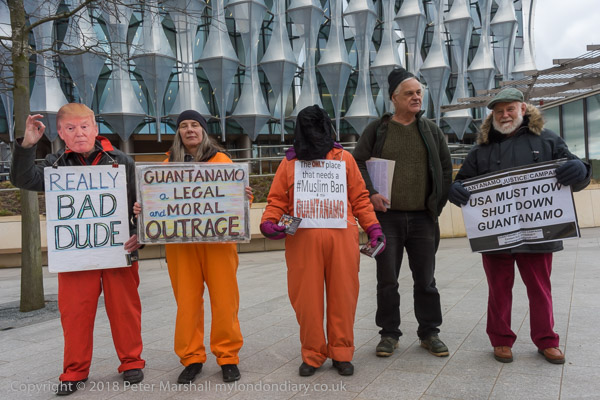
This was the first protest outside the new US Embassy where they intend to continue the regular monthly protests which they have had outside the old embassy in Grosvenor Square since 2007 until the illegal and immoral US prison camp is shut down and all the prisoners released.
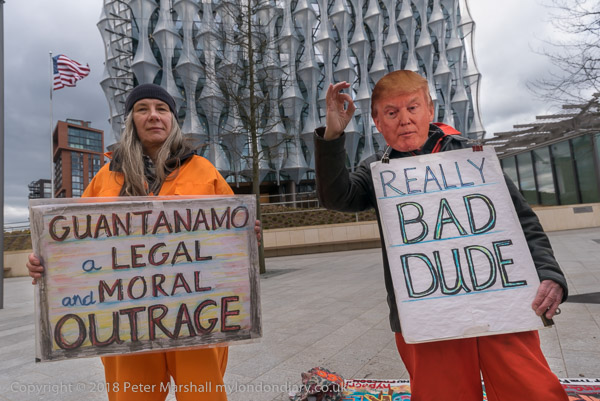
Normally these protests take place on the first Thursday of every month, but in March 2018 the protest scheduled for March 1st was postponed for a week because of snow. Because of the change of date some regular protesters were unable to attend and the protest started a little later than usual as some had problems finding the new location. This was the only event not connected with International Women’s Day I covered on the day.
In March 2018, 41 prisoners remained held at Guantanamo. There was no evidence against most of those held and tortured there that would stand up in any court of law, often simply a matter of suspicion or hearsay or desperate statements made under extreme torture. Many were simply foreigners in the region seized to gain cash rewards from the US forces.
Shut Guantanamo at new US Embassy
Family Courts put on Trial – Old Palace Yard
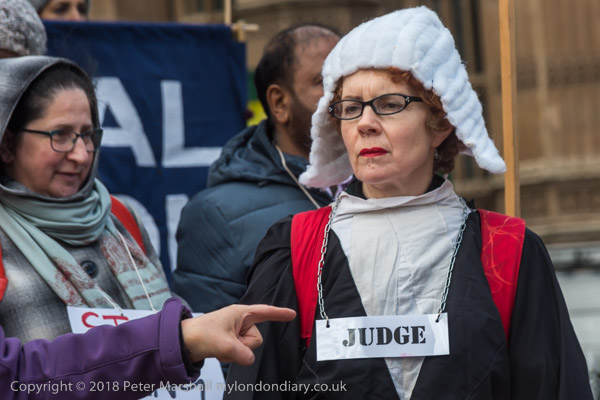
Global Women’s Strike had organised a mock trial of the UK Family Courts in an International Women’s Day protest in front of Parliament.
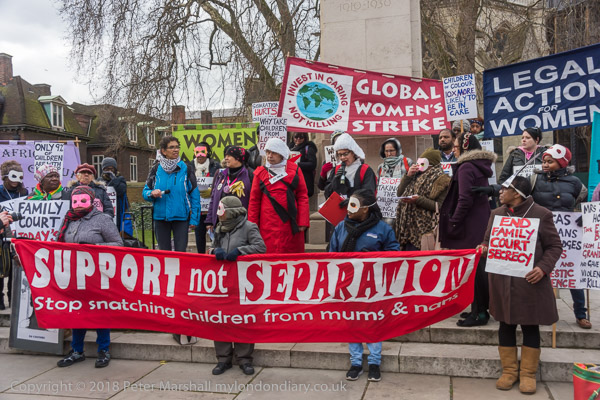
Among those who spoke were mothers whose children had been unjustly taken away, and statements from others were also read out, along with some shocking comments made in court by judges.
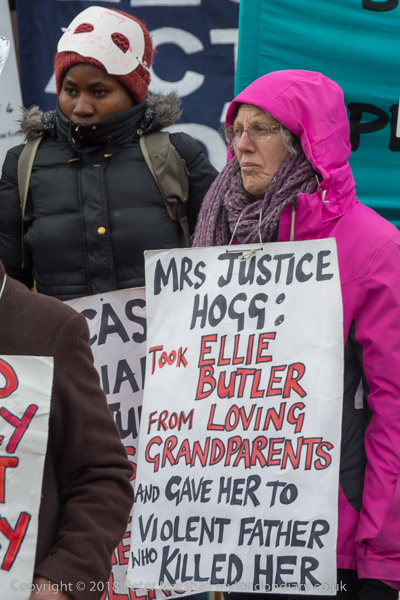
The UK has the highest rate of adoptions in Europe, almost all without consent of their birth family. Families of colour, immigrants and disabled are all disproportionately affected and in some working class areas 50% of children are referred to social services.
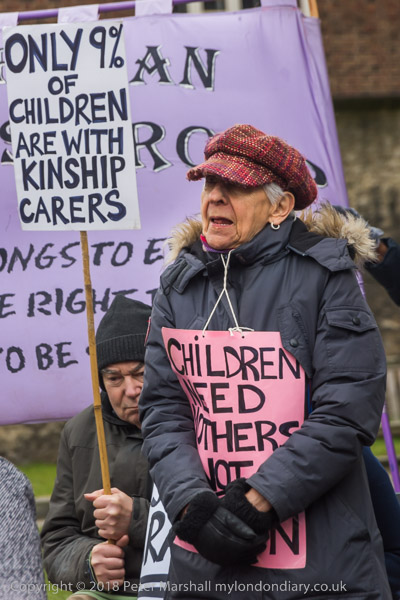
Poverty, often the result of benefit cuts and sanctions and poor housing conditions especially in temporary accommodation is often mistaken for neglect and the help mandated under the 1989 Childrens Act is seldom available. Children are often simply taken into care and then put up for adoption even though they have mothers or grandmothers who are capable of good parenting and only need support.
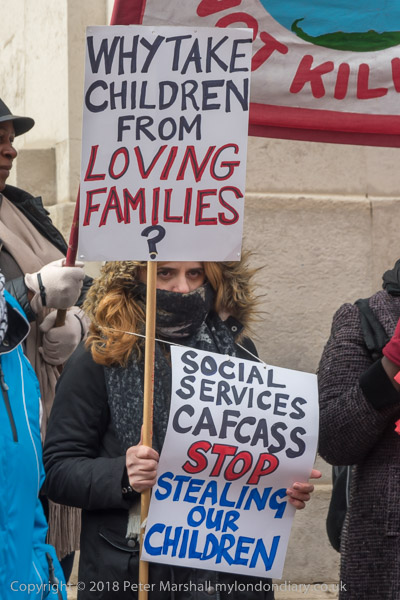
The campaigners say that victims of domestic abuse are often accused of ‘failing to protect’ their children and vague charges such as putting children at risk of future emotional harm and neglect are used by the secret courts to remove children from mothers and grandmothers. They want hearings with proper public scrutiny and an end to the gagging of mothers and familys, a great use of kinship carers and the proper implementation of the 1989 Children Act, and the Care Act 2014 which entitles disabled mothers to extra help.
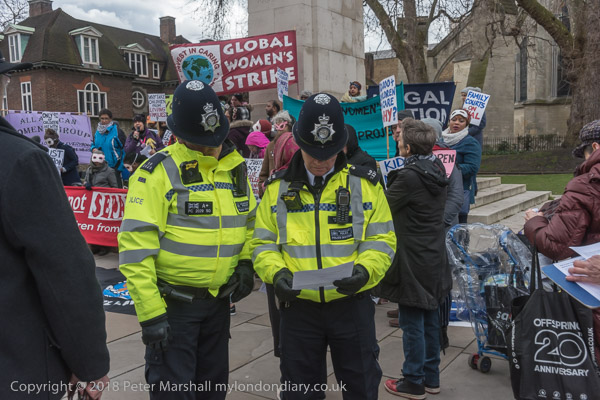
Parliamentary officer Black Rod sent police to try to shut down the protest, but the organisers showed them documents to say they had permission for the protest and to use a megaphone. They seemed puzzled but left.
London Women’s Strike – Russell Square
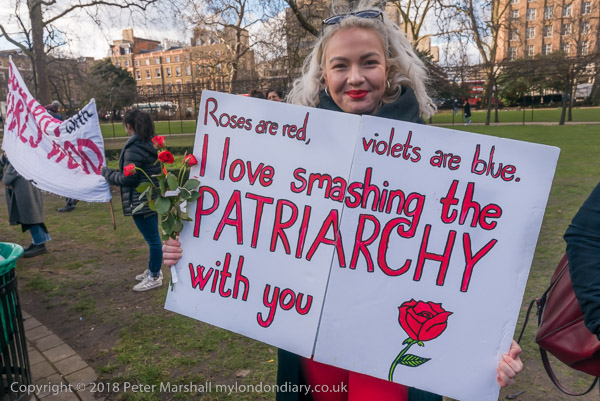
This was the big event of the day and included speeches about a wide range of causes. As the organisers said the “Women’s Strike is a strike for solidarity between women – women of colour, indigenous, working class, disabled, migrant, Muslim, lesbian, queer and trans women” and “is about realising the power we already hold – activating and nourishing resistance.“
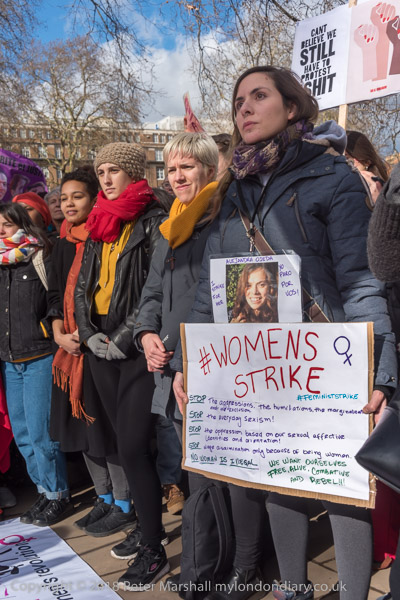
Many of the women present went on to other protests elsewhere including several protests in support of cleaners at the TopShop and The Royal Opera in Covent Garden, and cinema workers at Picturehouse, calling for an end to immigration detention an in solidarity with the Yarl’s Wood hunger strikers, for Unilever to withdraw its investment in Myanmar where its presence supports a government that has brutally raped, tortured and killed many Rohingya, and supporting sex workers by calling for the decriminalisation of prostitution and I also went to cover some of these
Much more about this event on My London Diary: London Women’s Strike.
Solidarity with Yarl’s Wood hunger strikers – Home Office
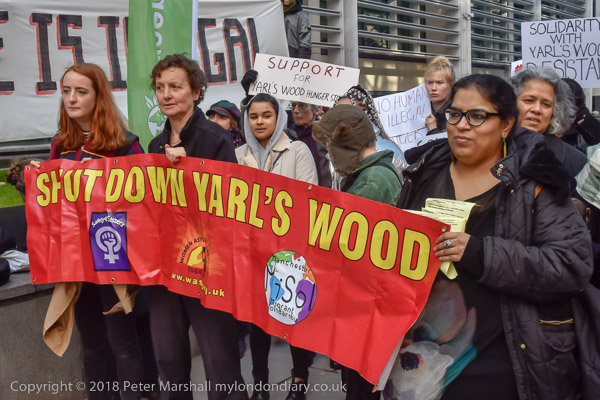
At the Home Office protesters showed solidarity with those held in Yarl’s Wood on International Women’s Day, in particular with those who had began a hunger strike 15 days ago against their imprisonment and the conditions and treatment by the detention centre staff and the Home Office.
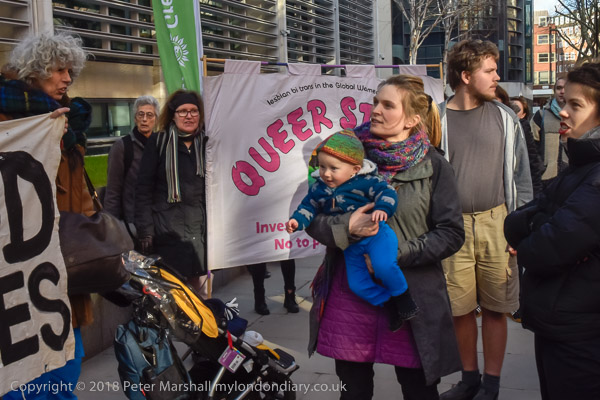
Since then the strike has gathered momentum and escalated into an all-out strike: work strikes, occupations, and a general refusal to cooperate, and long lists of the detainees demands have been published by Detained Voices.
More at Solidarity with Yarl’s Wood.
Reinstate the Royal Opera House 6 – Royal Opera, Covent Garden
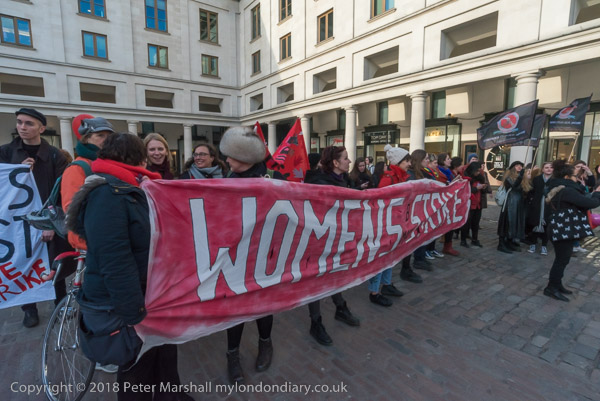
Six members of grassroots independent workers union CAIWU were fired by cleaning services company Kier for their jobs at the Royal Opera House, another disciplined and a sixth was on final written warning. They were clearly being victimised folloing successful trade union action which had forced Kier to pay its workers there the London Living Wage.
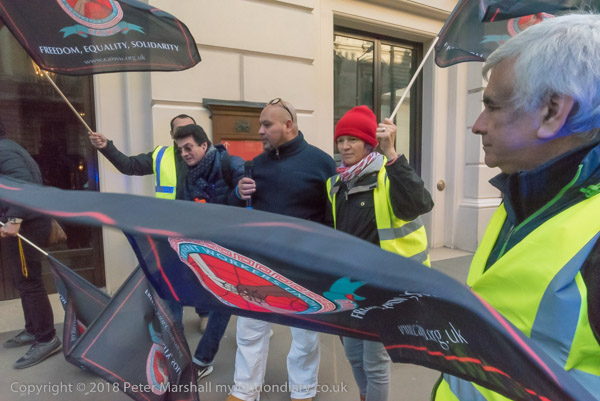
The large and loud action with union members augmented by women from the Women’s Strike blocked Drury Lane for some minutes. Police arrived, talked to the protesters and then went inside to talk to the managers inside before emerging, carefully removing poster and fliers the protesters had left on their car before driving off. The protesters later moved back into Covent Garden Market leaving the road free.
More at Reinstate the Royal Opera House 6.
& Myanmar’s Rohingya genocide – Unilever House
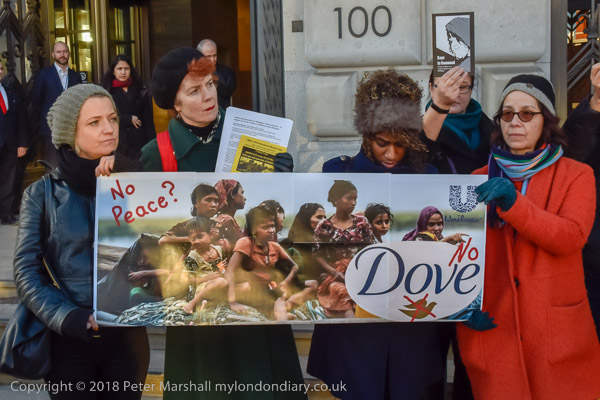
Women from the Women’s Strike called on Unilever to disinvest from Myanmar where they have a $667 million investment.
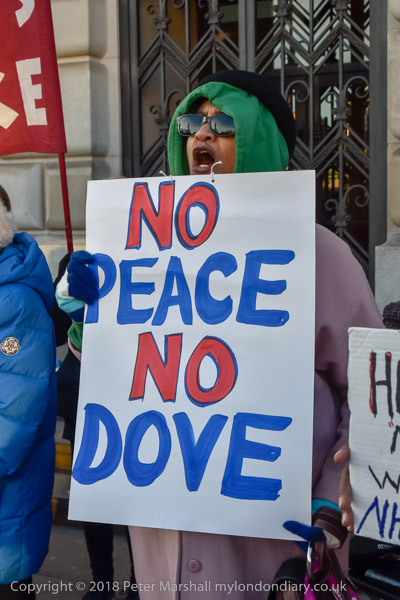
The military government there are committing systematic rape and other torture with total impunity as part of their genocide against the Rohingya people. Unilever claims, especially in its marketing for Dove products to respect the dignity and rights of women and girls and says it “aims to improve safety for women and girls in the communities where they operate.”
More at Unilever & Myanmar’s Rohingya genocide.







